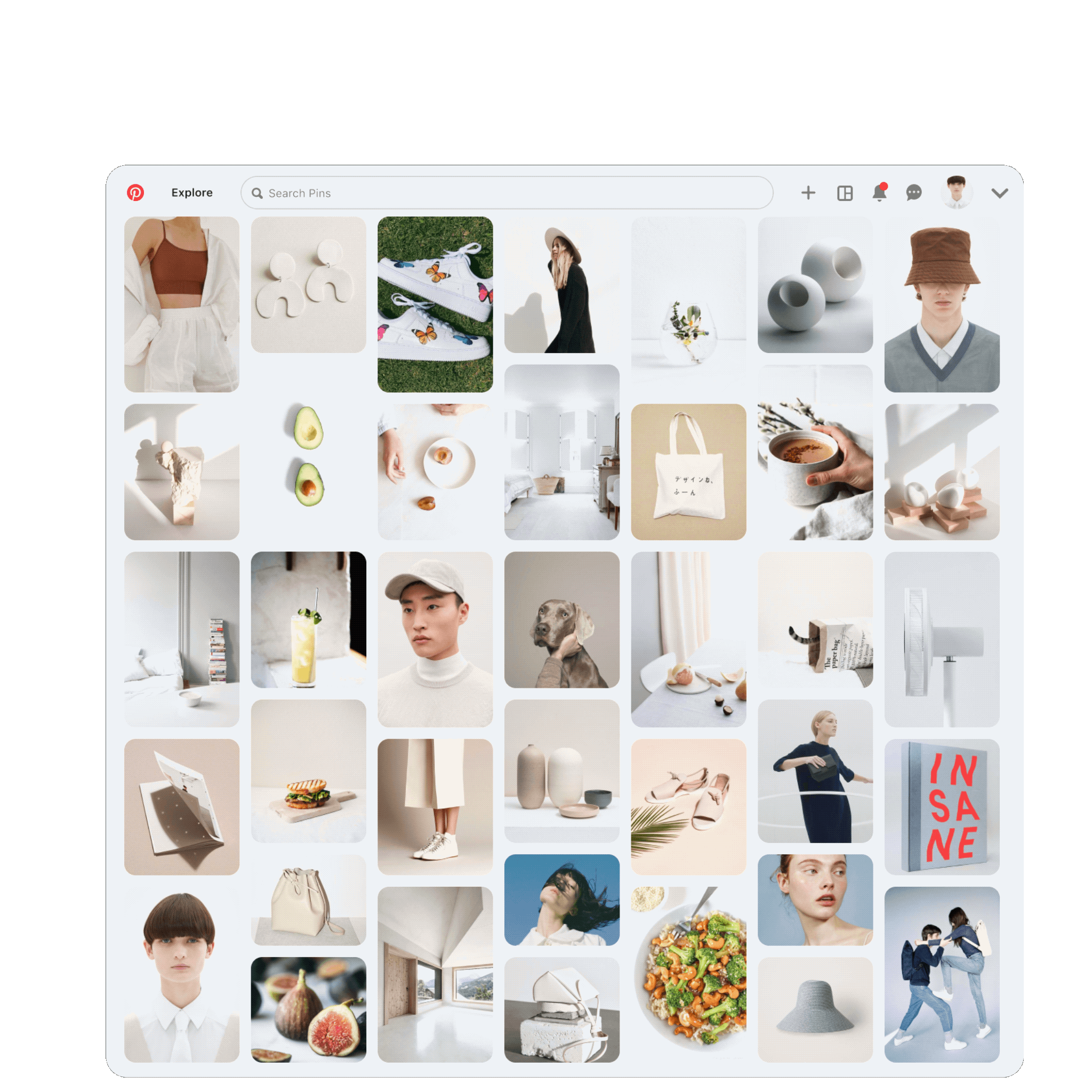Often described as the ‘digital home of inspiration’, Pinterest helps people discover and save ideas they love. Anthill Collective partnered with Pinterest to redesign their UX navigation systems on web, using futures forecasting and design thinking to create information architecture and systems designs that make Pinterest easier to use today—while planning for tomorrow.
Client
Sector
Technology
UX Design
UX Content Design
Information architecture mapping
Systems mapping
Our services
Our primary goal was to redesign Pinterest's UX navigation systems to create a seamless, people-centric experience. Our secondary goal centred on how to get there: by starting with mapping the user journey and leaning into research, we made important tools easier to access, streamlined Pinterest’s ‘ideal recall’ flow, and made sure that every interaction felt natural and engaging.
Project goals
Outcomes
A redesign of Pinterest’s UX navigation systems on web. The redesign added direct entry points to user’s most-needed surfaces, grouped entry points together by intuitive themes, and designed consistency between text and icon entry points.
Systems thinking: mapping the user journey.
At the heart of our approach was a commitment to understanding the varied needs of Pinterest's diverse user base. We embraced a holistic design thinking process, prioritizing empathy and user-centric solutions. This approach led us to reimagine how users could seamlessly navigate the platform, finding inspiration without friction.
Mapping the user journey. Great design starts with understanding the people you’re designing for. To kick off our work we partnered with Pinterest’s Design and Research teams to build on existing knowledge about the user base, and mapped an end-to-end journey of user needs.
Empathy interviews. Through direct interviews with Pinterest users, we mapped out the emotional landscape of Pinterest's audience, identifying key needs and pain points. These sessions allowed us to talk people on Pinterest through the surfaces they use most, and get a direct look into the user journey. We were also able to gather feedback on rough ideas.
Prototyping, testing and refinement. Early-stage prototypes were developed to explore various navigation solutions. This iterative process, grounded in user feedback, enabled us to refine our ideas rapidly. Interactive, fully modeled prototypes were tested in one-on-one sessions, letting us observe real-time interactions and gather qualitative insights that informed our next designs.
Designing clean and clear information architecture. We streamlined the information architecture to enhance clarity and reduce cognitive load, ensuring users could find what they were looking for with minimal effort. By directly linking core features like 'boards', we reduced clicks and barriers to peoples’ most-used surfaces, building a smoother and more efficient user experience.
Small changes, big impact.
Access to key tools and surfaces are now grouped more intuitively. Plus, entry points are tweaked so that icons are clustered with icons, and text entry points are use only when they’re really needed for comprehension.
Streamlined navigation
Research interviews showed again and again that the Pinterest tools people used most were usually hidden behind—sometimes behind more than one click. We pulled a new entry points to peoples’ most-used surface, making access easier (and, therefore, engagement better) for this vital tool.
Engagement, amplified
We applied a futures thinking lens to an audit of navigation across the sector, letting us see what’s working today, and forecast what’s coming tomorrow. This let us redesign Pinterest’s navigation as a system based in principles - rather than a static design - meaning Pinterest can build on and tweak this approach as their audience’s needs evolve.
A platform poised for growth
Designing forward, together.
The Anthill Collective and Pinterest partnership exemplifies our dedication to crafting experiences that inspire, innovate, and connect. As we look ahead, our focus remains on pushing the boundaries of design and technology, creating futures where inspiration is boundless and accessible to everyone.



